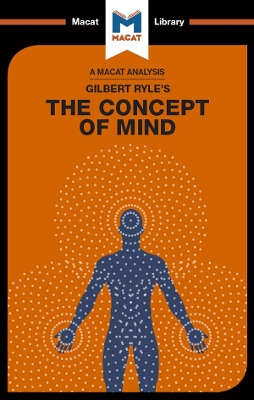The Macat Library
6 total works
Gilbert Ryle's 1949 The Concept of Mind is now famous above all as the origin of the phrase "the ghost in the machine" - a phrase Ryle used to attack the popular idea that our bodies and minds are separate. His own position was that mental acts are not...
Read moreGilbert Ryle's 1949 The Concept of Mind is now famous above all as the origin of the phrase "the ghost in the machine" - a phrase Ryle used to attack the popular idea that our bodies and minds are separate. His own position was that mental acts are not at all distinct from bodily actions. Indeed, they are the same thing, merely described in different ways - and if one cuts through the confusing language of the old philosophical debates, he suggests, that becomes clear. While, in many ways, modern philosophers of mind have moved on from or discarded Ryle's actual arguments, The Concept of Mind remains a classic example of two central critical thinking skills: interpretation and reasoning. Ryle was what is known as an "ordinary language" philosopher - a school who considered many philosophical problems to exist purely because of philosophical language. He therefore considered his task as a philosopher to be one of cutting through confusing language, and clarifying matters - exemplifying the critical thinking skill of interpretation at its best. Rather than adding to philosophical knowledge as such, moreover, he saw his role as one of mapping it - giving it what he called a "logical geography." As such, The Concept of Mind is also all about reasoning: laying out, organizing, and systematizing clear arguments.
An Analysis of David Hume's An Enquiry Concerning Human Understanding
by Michael O'Sullivan
David Hume’s 1748 Enquiry Concerning Human Understanding is a modern philosophical classic that helped reshape epistemology – the philosophy of knowledge. It is also a classic of the critical thinking skills of analysis and reasoning.
Analysis is all about understanding how arguments work and fit together. Having strong...
Read moreDavid Hume’s 1748 Enquiry Concerning Human Understanding is a modern philosophical classic that helped reshape epistemology – the philosophy of knowledge. It is also a classic of the critical thinking skills of analysis and reasoning.
Analysis is all about understanding how arguments work and fit together. Having strong analytical skills helps to break down arguments, pull out the evidence on which they rely, and understand the kinds of implicit assumptions and reasons on which they work. Reasoning, meanwhile, means building and presenting arguments, forming well-structured, evidenced, and organised cases for a particular point of view. Hume applied his analytical skills to arguments about how humans know and understand the world, and how our minds work. At base, he was trying to analyse human reason itself – to show the workings and limitations of the human mind, and show the origins of our beliefs.
Hume went on to apply his reasoning skills, creating an enduring argument about the nature of human knowledge. The result was one of the most striking and famous works in the history of philosophy.
Immanuel Kant’s Critique of Pure Reason is one of the most influential works in the history of philosophy – not to mention one of the most challenging. Its topic is the nature of human knowledge, and the question of whether or not it is possible to have knowledge of...
Read moreImmanuel Kant’s Critique of Pure Reason is one of the most influential works in the history of philosophy – not to mention one of the most challenging. Its topic is the nature of human knowledge, and the question of whether or not it is possible to have knowledge of the world at all.
Over two centuries later, Kant’s treatise remains a subject of fierce debate among philosophers, who continue to offer new interpretations of his meaning. What is not in doubt is the work’s originality and brilliance – nor its mastery of creative thinking.
Creative thinkers are able to bring a new perspective to questions and problems, look at things from a different angle, and show them in a fresh light. Kant achieved this by mediating between the two major schools of philosophical thought concerning knowledge – empiricism and rationalism – to create a complex third way. Where empiricists believed all knowledge is founded on experience, and rationalists believed true knowledge is founded on reason alone, Kant evaluated their arguments and proposed a third position – one incorporating elements of both, but within specific limits. As infamously dense as it is profound, Kant’s Critique shows creative thinking operating at a level few can aspire to reach.



